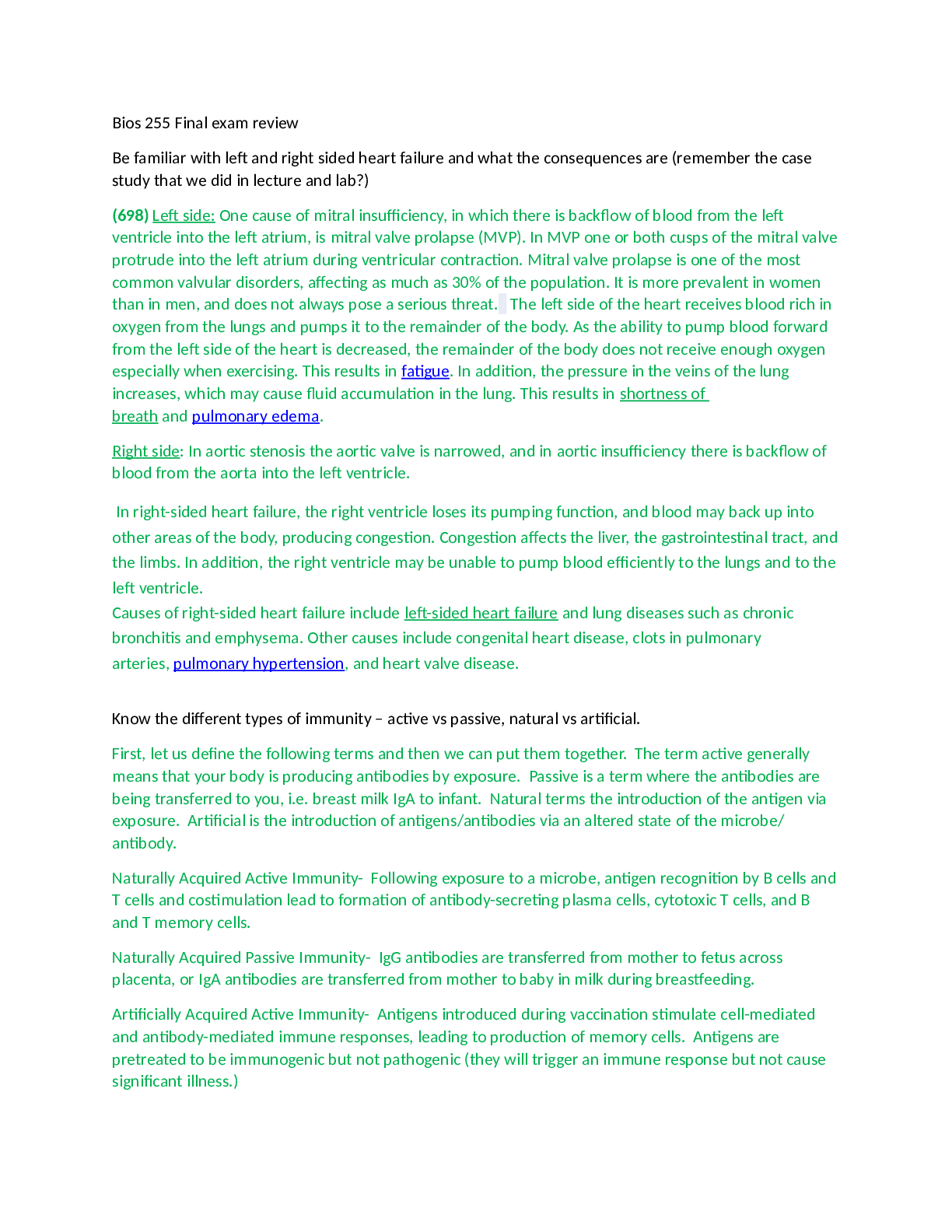Be familiar with left and right sided heart failure and what the consequences are (remember the case
study that we did in lecture and lab?)
(698) Left side: One cause of mitral insufficiency, in which there is backflow of blood from the left
ventricle into the left atrium, is mitral valve prolapse (MVP). In MVP one or both cusps of the mitral valve
protrude into the left atrium during ventricular contraction. Mitral valve prolapse is one of the most
common valvular disorders, affecting as much as 30% of the population. It is more prevalent in women
than in men, and does not always pose a serious threat. The left side of the heart receives blood rich in
oxygen from the lungs and pumps it to the remainder of the body. As the ability to pump blood forward
from the left side of the heart is decreased, the remainder of the body does not receive enough oxygen
especially when exercising. This results in fatigue. In addition, the pressure in the veins of the lung
increases, which may cause fluid accumulation in the lung. This results in shortness of
breath and pulmonary edema.
Right side: In aortic stenosis the aortic valve is narrowed, and in aortic insufficiency there is backflow of
blood from the aorta into the left ventricle.
In right-sided heart failure, the right ventricle loses its pumping function, and blood may back up into
other areas of the body, producing congestion. Congestion affects the liver, the gastrointestinal tract, and
the limbs. In addition, the right ventricle may be unable to pump blood efficiently to the lungs and to the
left ventricle.
Causes of right-sided heart failure include left-sided heart failure and lung diseases such as chronic
bronchitis and emphysema. Other causes include congenital heart disease, clots in pulmonary
arteries, pulmonary hypertension, and heart valve disease.
Know the different types of immunity – active vs passive, natural vs artificial.
First, let us define the following terms and then we can put them together. The term active generally
means that your body is producing antibodies by exposure. Passive is a term where the antibodies are
being transferred to you, i.e. breast milk IgA to infant. Natural terms the introduction of the antigen via
exposure. Artificial is the introduction of antigens/antibodies via an altered state of the microbe/
antibody.
Naturally Acquired Active Immunity- Following exposure to a microbe, antigen recognition by B cells and
T cells and costimulation lead to formation of antibody-secreting plasma cells, cytotoxic T cells, and B
and T memory cells.
Naturally Acquired Passive Immunity- IgG antibodies are transferred from mother to fetus across
placenta, or IgA antibodies are transferred from mother to baby in milk during breastfeeding.
Artificially Acquired Active Immunity- Antigens introduced during vaccination stimulate cell-mediated
and antibody-mediated immune responses, leading to production of memory cells. Antigens are
pretreated to be immunogenic but not pathogenic (they will trigger an immune response but not cause
significant illness.)
Read More
.png)

